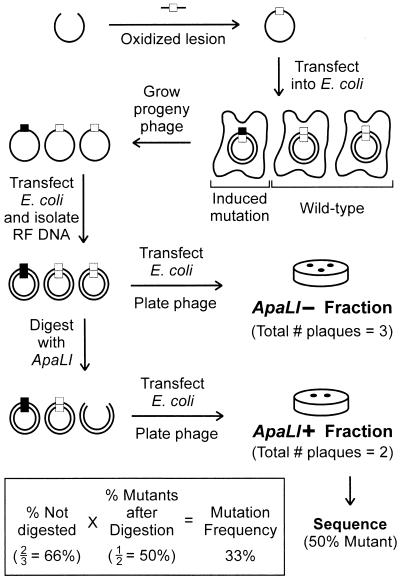Figure 3.
Experimental design to evaluate the mutation frequency of 5-OH-C, 5-OH-U, and Ug. Mutation frequency was determined in two steps. First, a preliminary mutation frequency was determined by measuring the ratio of phage produced from RF DNA that was either treated with or without ApaLI. That ratio, or preliminary mutation frequency, was next adjusted by multiplying it by the fraction of phage in the ApaLI-resistant population that was verified to be mutant by DNA sequencing. This adjustment is necessary because some wild-type RF DNA escapes ApaLI selection. In the example shown, 66% of the progeny were in the pool that was resistant to digestion by ApaLI. Of these, one-half were true mutants as determined by sequencing. Thus, as shown, the mutation frequency was (66%)(50%) = 33%.

